Did you know that the Zanzibar gem plant, or zamioculcas zamiifolia, is nearly indestructible? If you’re looking to elevate your indoor space with minimal effort, this resilient beauty might just be your new best friend. In this article, we’ll uncover essential care tips and tricks to ensure your Zanzibar gem thrives, bringing a touch of nature into your home while purifying the air around you. Get ready to transform your plant care routine and enjoy the benefits of this stunning houseplant!
Why Choose a Zanzibar Gem?
The Zanzibar Gem Plant, or Zamioculcas zamiifolia, stands out as a champion of resilience and style in the plant world. Its glossy, dark green leaves not only enhance the aesthetic of any space but also offer a unique touch of elegance to your decor. Beyond its beauty, this plant is renowned for its low-maintenance care, making it an ideal choice for busy individuals or novice plant parents. With its ability to thrive in low light and tolerate irregular watering, the ZZ plant is perfect for those looking to add greenery without the stress of constant upkeep.
Moreover, the Zanzibar Gem is a natural air purifier! Its leaves help filter indoor pollutants, contributing to a healthier living environment. This makes it not just a decorative piece but a functional addition to your home. Incorporating a ZZ plant into your space can boost your mood and improve air quality, proving that choosing a Zanzibar Gem is not just about aesthetics — it’s about enhancing your overall well-being too. Whether you place it on a desk, shelf, or in a cozy corner, this resilient beauty promises to thrive while adding a refreshing touch to your surroundings.
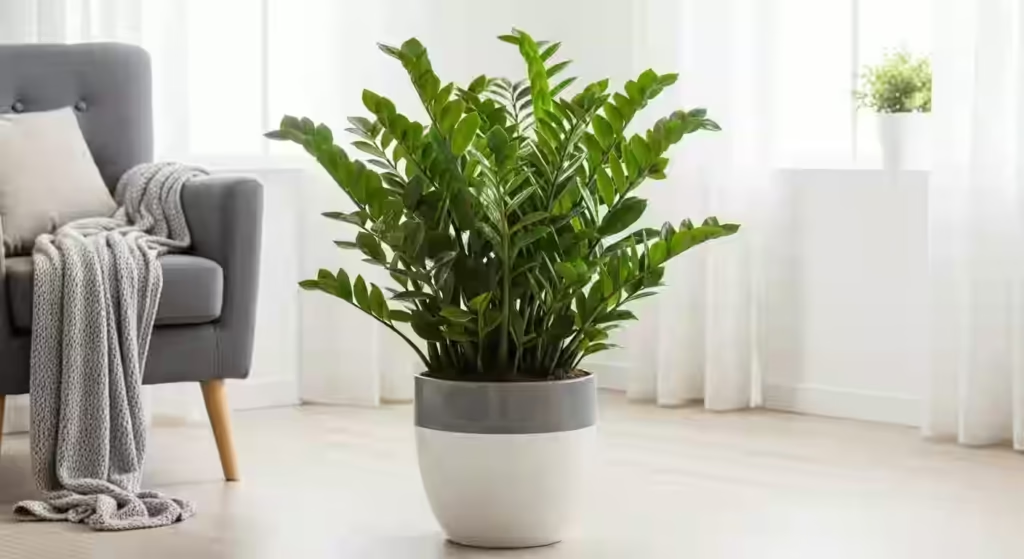
What Is a Zanzibar Gem Plant?
The Zanzibar Gem Plant, scientifically known as Zamioculcas zamiifolia , is a striking houseplant cherished for its glossy, dark green leaves and low-maintenance nature. Originating from the tropical regions of East Africa, this succulent thrives in various indoor conditions, making it an ideal choice for both novice and experienced plant lovers. Its unique ability to tolerate neglect and thrive in low light adds to its charm, allowing it to enhance any space without demanding constant attention.
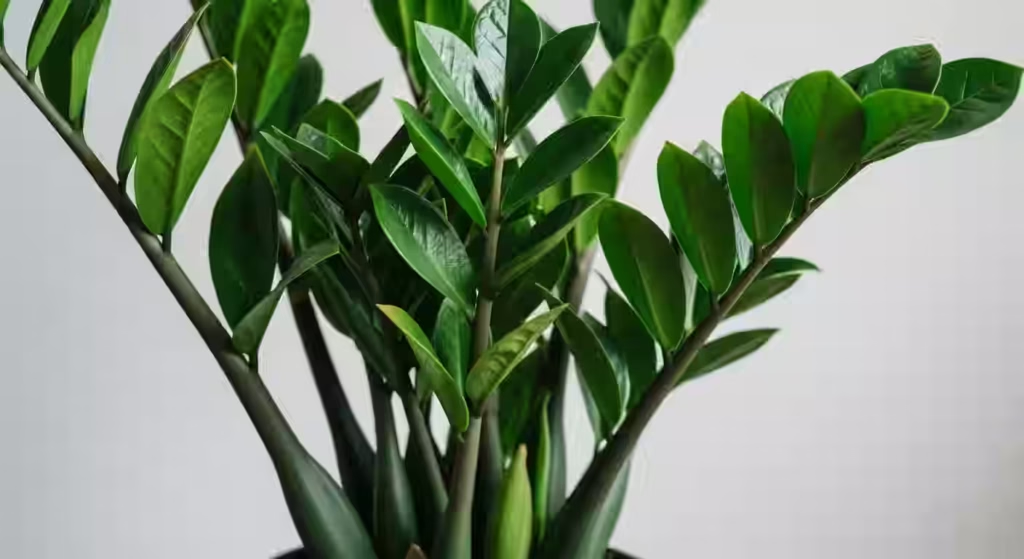
Key Features
One of the standout features of the Zanzibar Gem Plant is its resilience against drought; its thick, fleshy stems store water, enabling it to survive even if you forget to water it for weeks! 🪴 When caring for your ZZ plant, consider its preference for well-draining soil and indirect sunlight. This not only keeps it healthy but also showcases its lush foliage beautifully. Plus, with minimal pruning needed, you can enjoy a vibrant green companion that effortlessly complements your home decor while requiring little effort to maintain.
Explore the beauty of the Zanzibar Gem Plant and discover how this stunning addition can elevate your indoor gardening experience!
Ideal Growing Conditions for Your Plant
To ensure your Zanzibar Gem, or Zuzu plant, flourishes, it’s essential to replicate its native environment as closely as possible. This resilient plant thrives in well-draining soil, so consider a mix of potting soil and perlite or sand to enhance drainage. Aim for a pot with drainage holes to prevent water accumulation, which can lead to root rot.
Light conditions play a crucial role in the health of your Zuzu plant. While it can tolerate low light, it truly thrives in bright, indirect sunlight. Position it near a window where it can bask in filtered light, but avoid harsh direct rays that may scorch its glossy leaves. Additionally, keep the temperature stable between 65°F to 85°F (18°C to 29°C) to create a cozy atmosphere for growth.Regularly dust the leaves to enhance photosynthesis and maintain their vibrant appearance — this simple act can significantly boost your plant’s vitality!
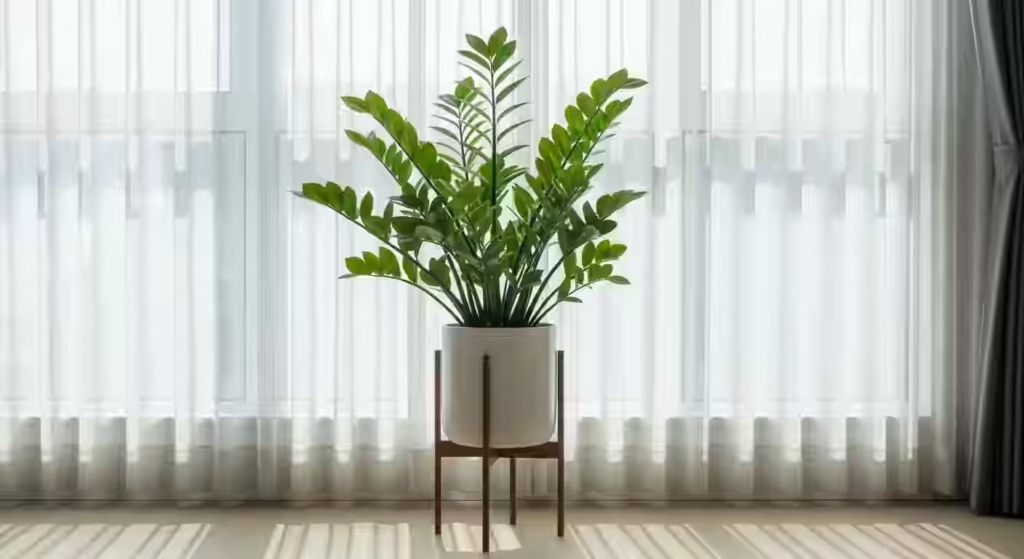
Watering Tips for Healthy Growth
To ensure your Zanzibar Gem thrives, mastering the art of watering is crucial. This unique plant prefers a more hands-off approach when it comes to hydration. Aim to water only when the top 2-3 inches of soil feel dry to the touch. Overwatering can lead to root rot, a common pitfall for many indoor gardeners. A good rule of thumb is to check your plant weekly; if the soil is still moist, wait another few days before checking again.
When you do water, be sure to do so thoroughly. Allow water to drain from the bottom of the pot to ensure the roots get adequate moisture without sitting in excess water. Consider using a pot with drainage holes to facilitate this process. Additionally, using room temperature water can help prevent shock to the plant. Remember, patience is key — Zanzibar Gems are slow growers, and understanding their specific needs will yield a flourishing addition to your home decor!
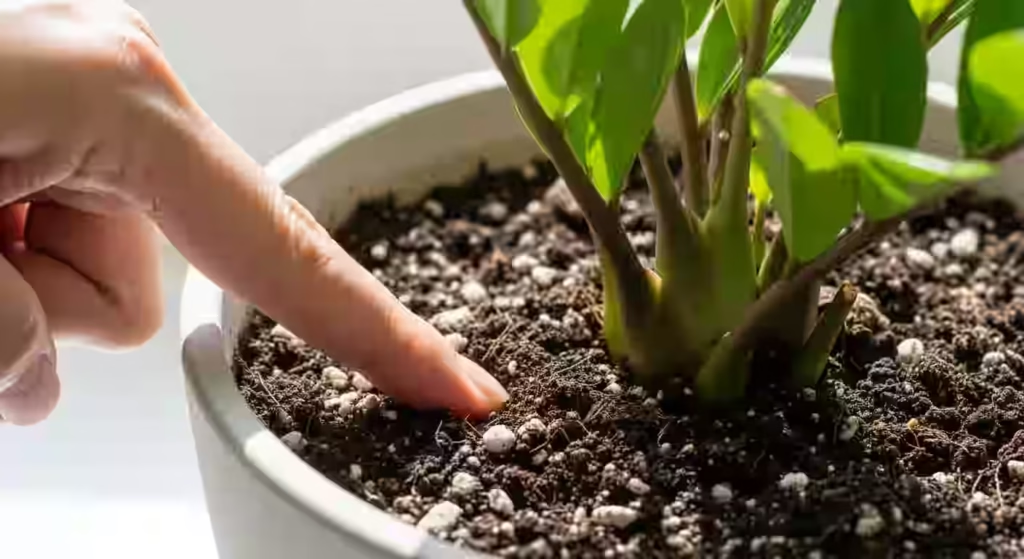
Light Requirements: Finding the Right Balance
When it comes to nurturing your Zanzibar Gem plant, understanding its light preferences is crucial for optimal growth. These resilient beauties thrive in bright, indirect sunlight but can also adapt to low-light conditions. However, striking the right balance is key; too much direct sunlight can scorch their glossy leaves, while insufficient light may stunt their growth. Aim for a spot near a window that filters light — think sheer curtains or a well-lit room without harsh rays.
To ensure your Zanzibar Gem flourishes, observe its response to your chosen lighting conditions. If the leaves start to yellow or drop, it may be a sign of too much sun exposure. Conversely, if growth slows or new leaves appear small and sparse, consider relocating it to a brighter location. Remember, experimenting with different positions can lead to surprising results — sometimes, a simple adjustment can turn your plant into a thriving centerpiece!
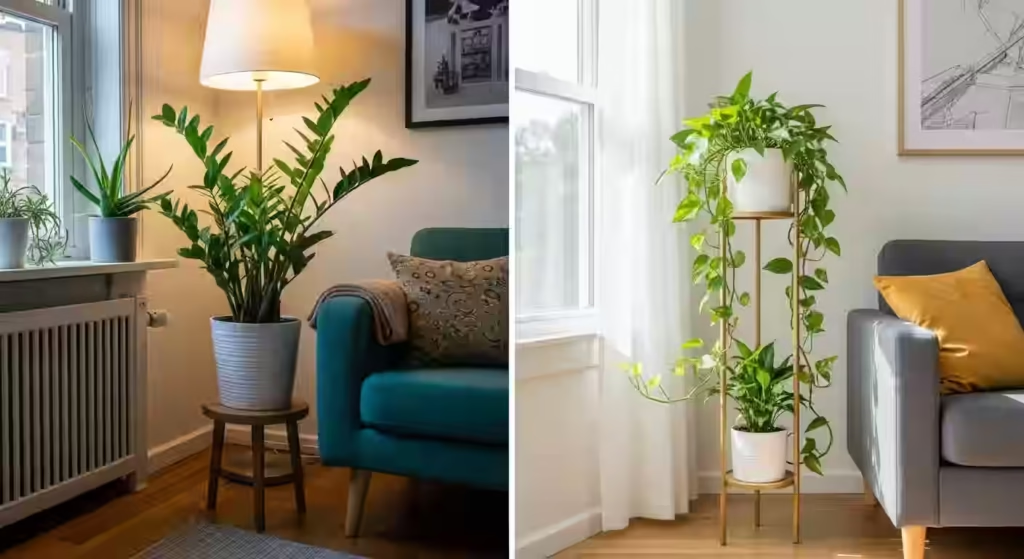
Common Pests and How to Handle Them
When nurturing your Zanzibar Gem (ZZ plant), it’s essential to stay vigilant against common pests that can threaten its health. Spider mites and mealybugs are notorious for infesting ZZ plants, often hiding in the crevices of leaves. To tackle these pesky intruders, start by inspecting your plant regularly. If you spot any signs of infestation, a gentle rinse under lukewarm water can dislodge many of them. For a more thorough approach, consider using insecticidal soap or neem oil, which are effective yet safe options for your indoor garden.
Another potential threat is fungal gnats , which thrive in overly moist soil. To prevent these annoying pests, allow the top inch of soil to dry out before watering again. If you notice adult gnats flying around, sticky traps can help capture them while you adjust your watering routine. Remember, maintaining good airflow around your ZZ plant also plays a crucial role in pest prevention. By keeping these strategies in mind, you can ensure your ZZ plant remains healthy and thriving!
Fertilizing Your Zanzibar Gem Plant Effectively
When it comes to zamioculcas zamiifolia care, understanding the right fertilization routine is crucial for a thriving plant. Unlike many houseplants, your Zanzibar Gem thrives on neglect, which means over-fertilization can do more harm than good. Aim to fertilize during the growing season — spring and summer — when the plant is actively growing. A balanced, water-soluble fertilizer diluted to half strength is ideal, ensuring you provide essential nutrients without overwhelming your gem.
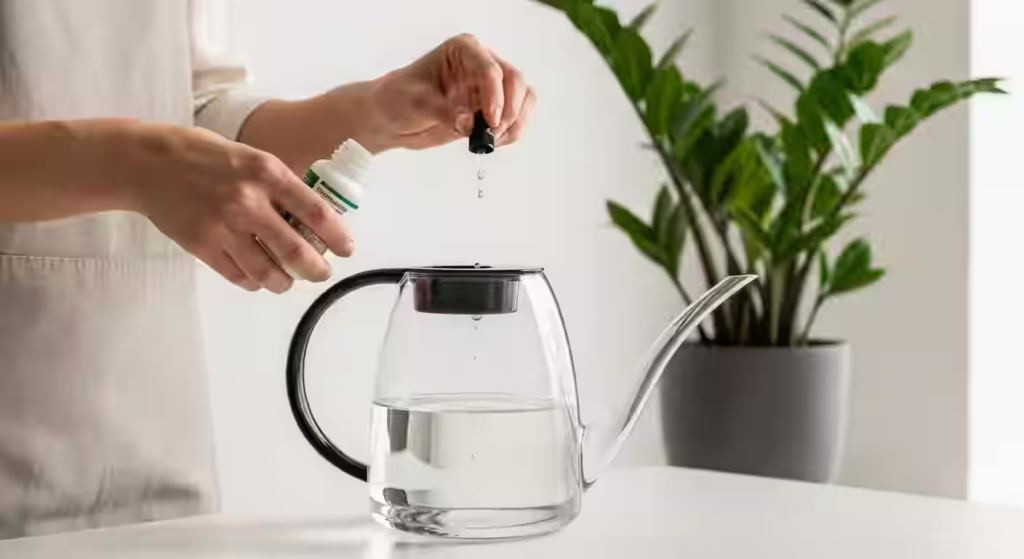
To apply fertilizer effectively, follow these simple steps:
1. Frequency: Fertilize every 4-6 weeks during the growing season.
2. Watering: Always water the plant thoroughly before application to prevent root burn.
3. Observation: Watch for signs of nutrient deficiency, like yellowing leaves, which may indicate that it’s time to adjust your feeding schedule.
By adhering to these guidelines, you’ll help your Zanzibar Gem flourish, showcasing its glossy, dark green leaves and maintaining its reputation as a low-maintenance beauty in your home decor. Remember, less is often more when it comes to fertilizing this resilient plant!
Propagation Methods for New Plants
When it comes to expanding your Zanzibar Gem Plant collection, propagation is both an art and a science. The most common method is leaf cuttings, which can be done with just a healthy leaf and some patience. Simply select a mature leaf, cut it cleanly at the base, and allow it to dry for a day or two to form a callous. Then, place it in well-draining soil and keep it slightly moist. In a few weeks, you’ll notice new roots forming — a sign that your propagation journey is off to a great start!
Another exciting technique is division. This method is perfect for those who have a mature Zanzibar Gem that has outgrown its pot. Carefully remove the plant from its container and gently separate the root ball into sections, ensuring each section has roots and at least one stem. Replant these divisions in fresh soil, and watch them thrive as they establish their own identities. Both methods not only help you grow your plant family but also provide an opportunity to share your love for greenery with friends and family!

Styling Your Home with Zanzibar Gems
Incorporating Zanzibar gems Plant into your home decor can transform any space into a stylish oasis. These resilient plants, with their glossy leaves and unique shape, serve as striking focal points in various design schemes. Consider placing a Zanzibar gem on a minimalist shelf or a side table to create an eye-catching contrast against neutral walls. Their architectural form pairs beautifully with both modern and bohemian aesthetics, making them versatile companions for your decor.
To further enhance their visual appeal, try grouping your Zanzibar gem with other plants of varying heights and textures. This creates a lush, layered look that draws the eye and invites a sense of tranquility. Additionally, using decorative pots — think ceramic, woven baskets, or metallic finishes — can elevate the overall vibe of your space. The key is to find harmony between the plant’s natural beauty and your home’s existing decor, ensuring that it complements rather than competes with your style.
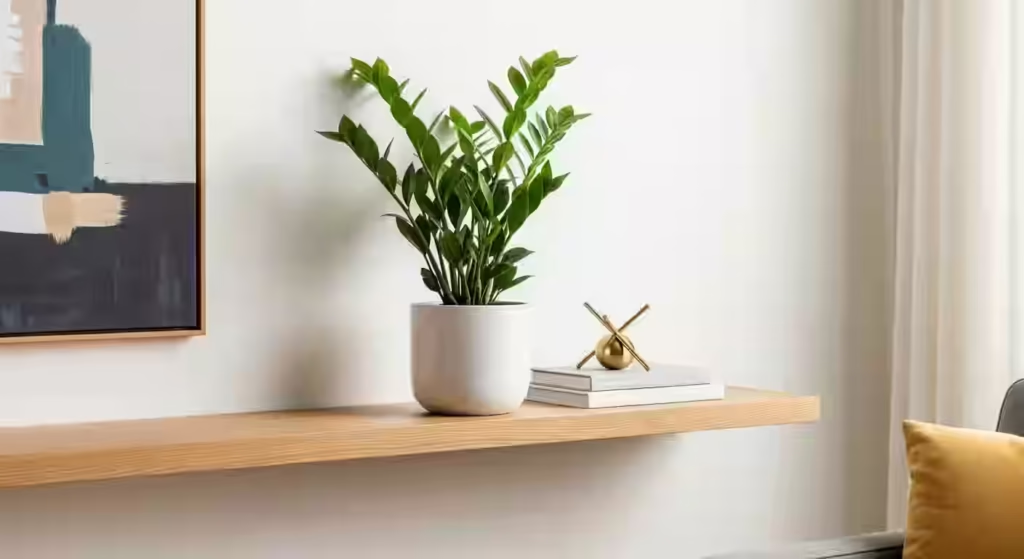
Cultivating Your Zanzibar Gem Plant Success
To truly thrive with your Zanzibar Gem Plant, attention to detail is key. Begin by selecting the right potting mix — aim for a well-draining blend that includes perlite or sand to prevent waterlogging. This plant prefers a snug fit in its pot, so choose one that’s just slightly larger than the root ball. Regularly check the moisture level; this resilient plant can handle neglect, but ensuring it doesn’t sit in soggy soil will keep it healthy and vibrant.
Another secret to success is finding the perfect spot for your Zanzibar Gem. These plants flourish in bright, indirect light but can adapt to lower light conditions, making them ideal for various spaces in your home. However, be mindful of direct sunlight, which can scorch their lovely leaves. For a creative touch, consider grouping your Zanzibar Gem with other low-light tolerant plants to create a stunning indoor oasis that showcases its unique architectural beauty.
FAQs Discover The Secrets To Thriving With Your Zanzibar Gem Plant
What is a Zanzibar Gem Plant?
The Zanzibar Gem, also known as Zamioculcas zamiifolia, is a popular houseplant known for its glossy, dark green leaves and low maintenance requirements.
How often should I water my ZZ Plant ?
Water your Zanzibar Gem every 2-3 weeks, allowing the soil to dry out completely between waterings. Overwatering can lead to root rot.
What type of light does a Zanzibar Gem prefer?
This plant thrives in indirect light but can tolerate low-light conditions. Avoid direct sunlight, as it can scorch the leaves.
How can I tell if my Zanzibar Gem is healthy?
A healthy Zanzibar Gem has upright, shiny leaves without yellowing or drooping. If you notice these issues, check your watering habits.
Can I propagate my Zanzibar Gem?
Yes! You can propagate your Zanzibar Gem through leaf cuttings or division of the rhizomes. Ensure each cutting has at least one leaf.
What pests should I watch out for?
Common pests include spider mites and mealybugs. Regularly inspect your plant and treat infestations promptly with insecticidal soap or neem oil.
Is the ZZ Plant safe for pets?
While the Zanzibar Gem is considered mildly toxic if ingested, it’s generally safe around pets when placed out of reach.
How do I fertilize my Zanzibar Gem Plant?
Fertilize your Zanzibar Gem Plant with a balanced houseplant fertilizer every 4-6 weeks during the growing season (spring and summer) for optimal growth.





